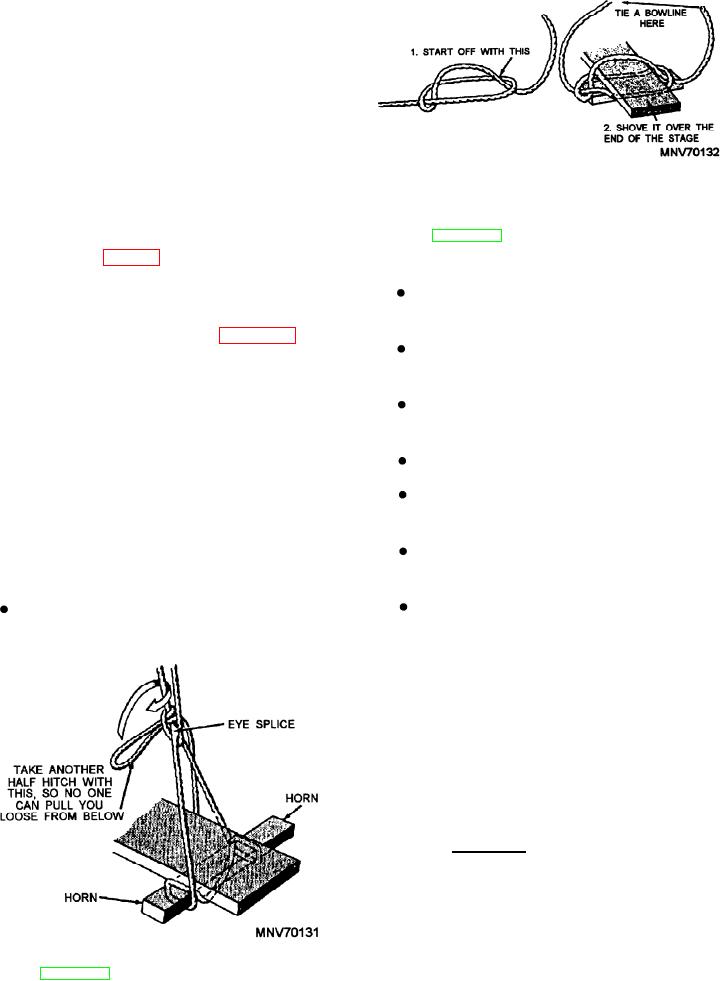
5. All tools, buckets, paint pots, and brushes used
by personnel working over the side of the ship should be
secured by lanyards to prevent their loss overboard or
injury to personnel below.
STAGE
The stage is a stout plank, to the underside of which
two short wooden horns are attached athwartships,
either by nailing or bolting on, a foot or two from either
end. When the stage is rigged properly, all the weight
comes on the plank. The chief purpose of the horns is to
hold the plank off the side.
The gantlines on your stage may be rigged in one of
Figure 5-8.--Rigging with a stage hitch.
two ways. The first is by means of an eye splice in the
end of the gantline (fig. 5-7). Be sure to pass the part
between the half hitches under the plank. If you pass it
Warn your partner before making moves that
over the plank, there will be nothing holding you up but
may jar the stage.
the horns. The second method of rigging the stage is by
means of the stage hitch, shown in figure 5-8. This
Always wear a safety harness and lifeline when
method is the better of the two because there are two
working on a stage.
parts of the gantline under the plank instead of one, and
there is no need to eye splice the end.
Always wear a life jacket when working over
water.
REEVING GANTLINES
Keep clear of overboard discharges.
The best way to reeve your gantline for lowering is
over a smooth surface. Never have your gantlines
Do not secure safety lines or gantlines to the
running over a sharp edge. Place chafing gear wherever
stations that hold up the lifelines.
the lines from your shackles cross anything sharp.
Do not allow more than two persons on a stage at
Be sure to follow these safety precautions whenever
the same time.
you are part of an over-the-side working party:
Secure tools to the stage with small stuff to
Lower one end of your partner's stage at a time
while your partner keeps the other side secured.
prevent them from dropping.
TAKING SOUNDINGS
Soundings (measuring the depth of water) are taken
when the ship is going into or out of port or approaching
an anchorage. The hand lead is the most accurate means
for obtaining soundings. It is used in shallow water and
when the speed of the ship is slow. Even though ships
today have modern depth-sounding equipment, lead
lines are a mandatory piece of equipment and are
routinely checked during inspections and refresher
training periods.
LEAD LINE
The lead line or hand lead consists of a narrow
block of lead weighing from 7 to 14 pounds, which is
Figure 5-7.--Eye splice rig on a stage.
5-5

